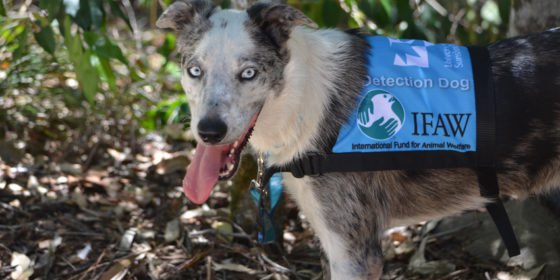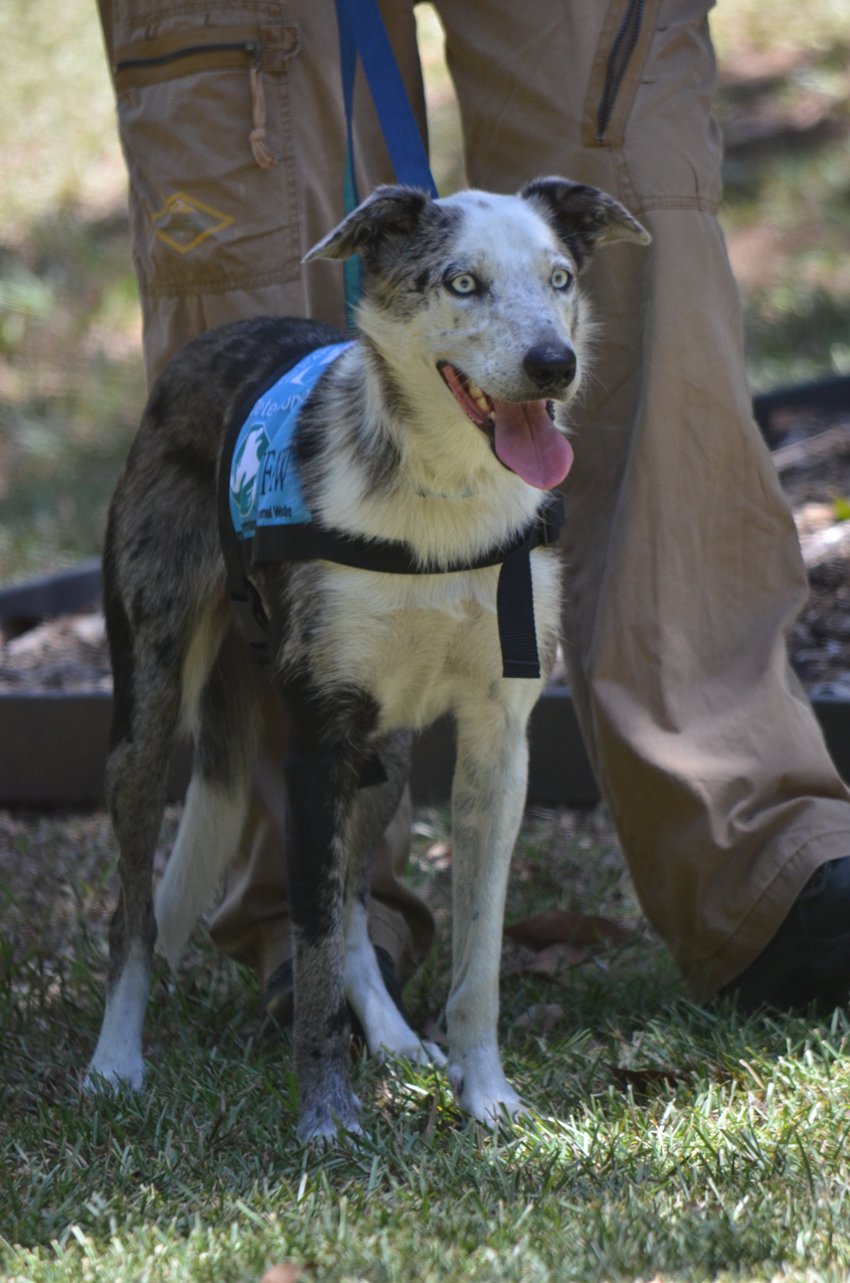
Sponsored: This is Bear, a super-smart rescue dog from Australia whose keen sense of smell is being put to good use by the International Fund for Animal Welfare (IFAW) to rescue threatened koalas.
The one-year-old Border Collie/Koolie cross with striking blue eyes had a difficult start in life, being put on sale in a pet shop and bought as a family pet but ultimately proving too high energy and play obsessive for his owners.
But the qualities that made Bear difficult to rehome make him a perfect candidate for a koala detection dog.
A partnership between IFAW and the University of the Sunshine Coast led to Bear being rescued in February last year to become one of three dogs beginning koala training with the university’s Detection Dog Programme.
Elusive koalas can all too often be injured or killed when loggers get to work in eucalyptus plantations and it is hard to spot a koala mother and her joey high in the trees with just a human eye. If the presence of koalas is detected, plantation work can be delayed while the animals either move on or are relocated to a safer location.

Koalas are classified on the official Red List of endangered animals as vulnerable to extinction as they face an array of dangers. Bushfires, drought, disease, particularly chlamydia, road traffic and attacks by domestic dogs all put these marsupials at risk, but the greatest danger is now posed by logging of blue gum eucalyptus trees. This is why koala detection dogs are so important.
Josey Sharrad, IFAW Australia’s Native Wildlife Campaigner, said: ‘Koalas are in crisis across Australia and this project also allows us to rescue dogs from death row to help us save koalas. Not many dogs have what it takes to be a detection dog, but Bear is the perfect candidate.
‘Both dogs and koalas get a second chance at life’
‘He is high-energy, focused and, most importantly, is only interested in his ball and has zero interest in chasing koalas. These are conservation dogs and they cannot be a threat to wildlife. So it’s a win win – both dogs and koalas get a second chance at life.’
A dog’s ability to smell is believed to be between 1,000 and 10,000 times better than a human’s. The koala scent used for training detection dogs is sourced from fur samples from koalas at the Australia Zoo. Trainers use the fur to hide scent in testing areas. Bear’s trainer is now using a device to launch scent up into the trees to emulate a koala’s natural position. Bear is successfully locating odour at around a 15-20ft height.
Trained using play techniques, tracking down koalas is all linked to a fun game of ball for Bear. When Bear successfully tracks the scent of a koala he is rewarded with his ball. The ball means everything to Bear and he gets to play even more when he finds the scent source. There is never any punishment in detection dog training, just motivation via play.
A ‘masters degree’ in odour detection
Bear is the only koala detection dog in his class to make the grade so far. He’s passed all his preliminary tests with flying colours. Other dogs which did not pass the stringent tests have been successfully placed in forever homes by the university. Bear, however, has been scientifically proven to detect koala scent with a 96% success rate. He is also able to distinguish koala scent from other marsupials with 95% accuracy.
He continues to impress his human colleagues with his brilliant results as he tracks live koalas out in the field. Later this year he will take his ‘masters degree’ in the subject. This will see him test his koala detection skills against humans and even drones.
IFAW say they are delighted to be supporting this fantastic initiative. It provides a secure future for special dogs in need of a home while helping to rescue threatened koalas.
For more information about IFAW, click here.
IFAW is a client of Gay Star News






